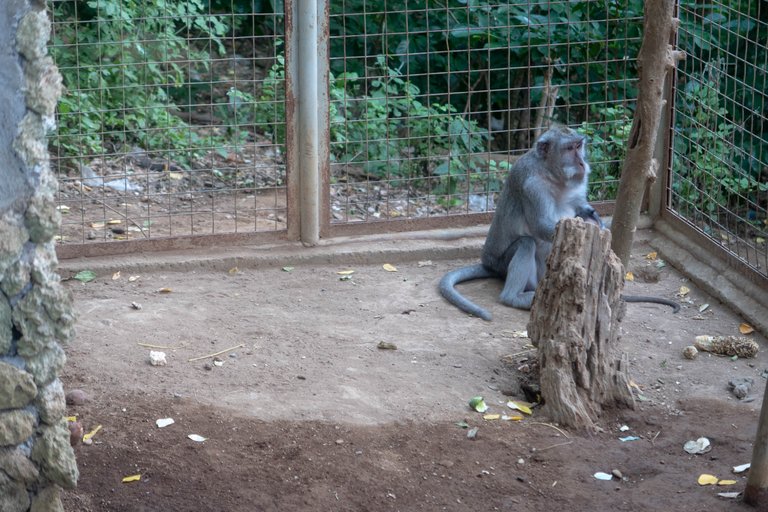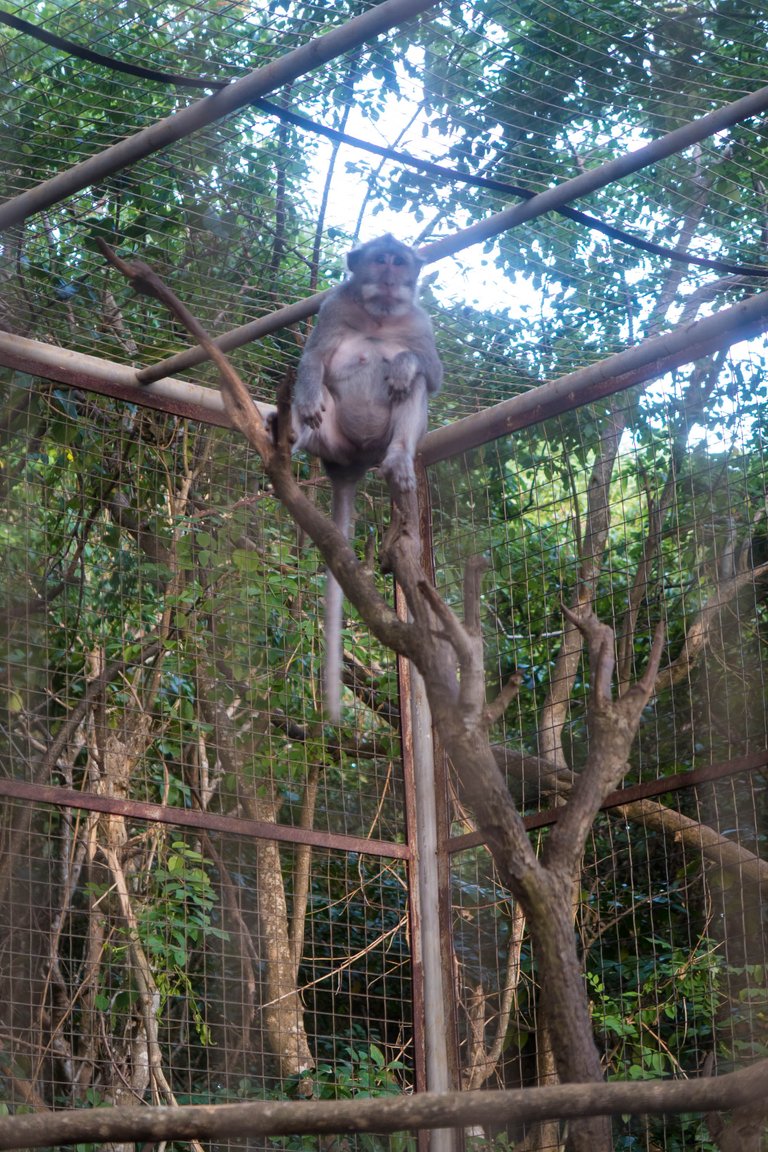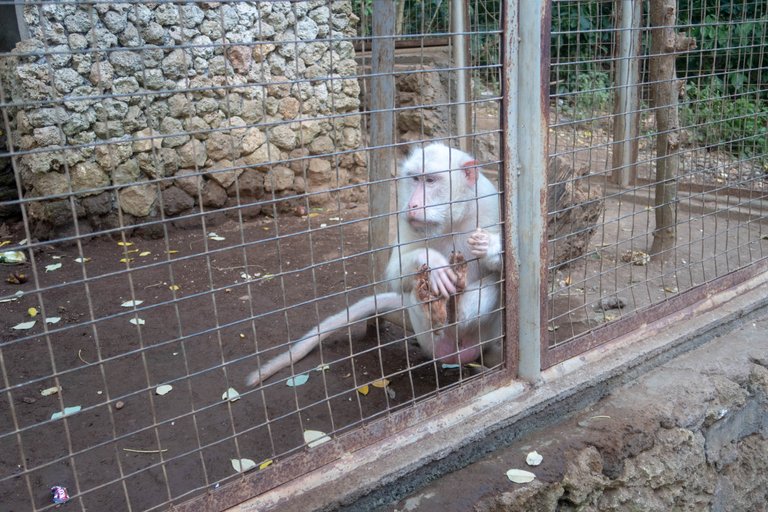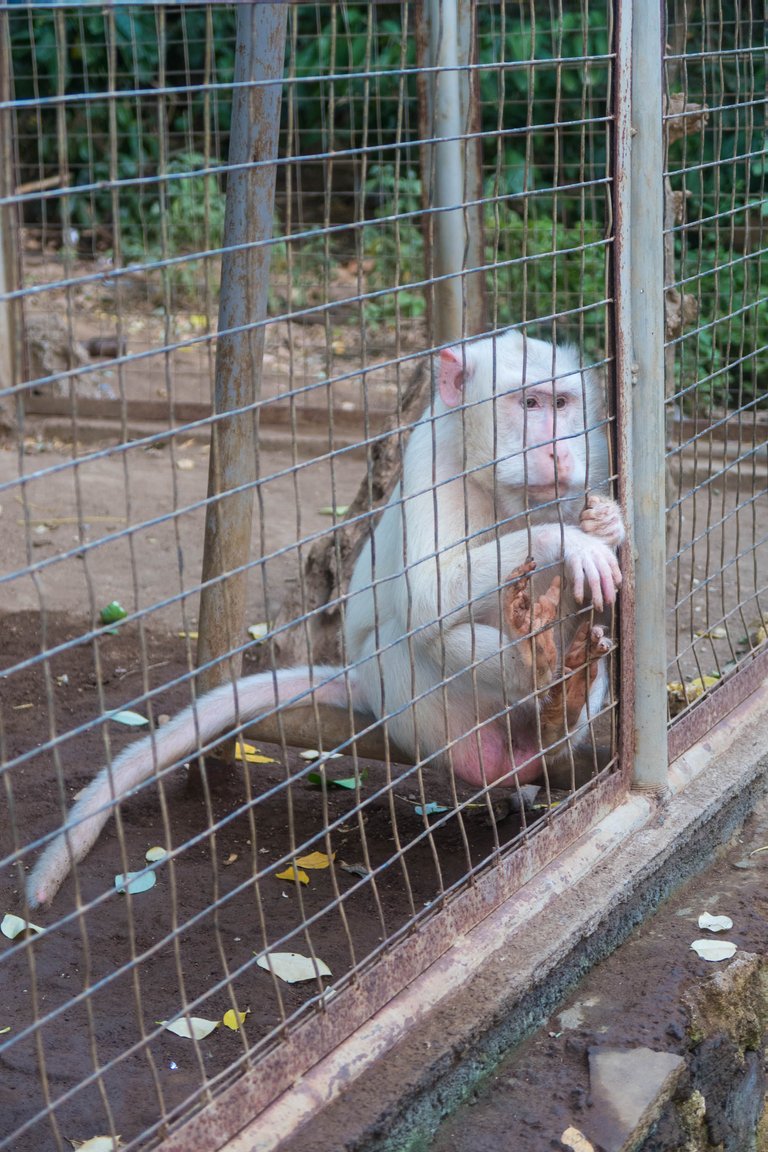Uluwatu Temple, perched on cliffs and built in the eleventh century, is famous for its stunning views and sunsets. But this visit was not just about the temple. This time, I was curious about a special white monkey.

In Balinese culture, anything unusual near the temple is often seen as special. The white monkey at Uluwatu fits this idea, making it very interesting to both locals and visitors. While science says it’s an albino monkey, many still see it as something special.

The white monkey was first found in 2019 near the temple. Sadly, its unique color made it a target for other monkeys. The local macaques, with their gray fur, attacked the white monkey, hurting it badly. Because it looked different, they did not accept it. Locals rescued the monkey, treated its wounds, and put it in a large cage to keep it safe. This place is called the Monkey Care Center.
When I first saw the white monkey, it looked like any other monkey but with white fur. The cage, about three to four meters high and four times five meters, has a few trees inside for climbing. Even though it’s in a cage, the white monkey seemed calm and normal. It was not alone; there were a few other monkeys, including a female mate and some young ones. Even though it’s different and not accepted by the others, it has its own little family now.

The Monkey Care Center is not just for the white monkey. It also helps other injured monkeys who have been attacked. The cage is big enough for the monkeys to move around, and there’s a door for staff to enter and care for them. Since it’s in the forest located just in front of the temple area, it still is their natural habitat.



The white monkey is special to the Balinese, often linked to Hanuman, the monkey god from the Ramayana. This makes it even more important to protect it.
It’s sad that the white monkey can’t roam free like the others, but it’s good to know it’s safe and has friends, or family.



